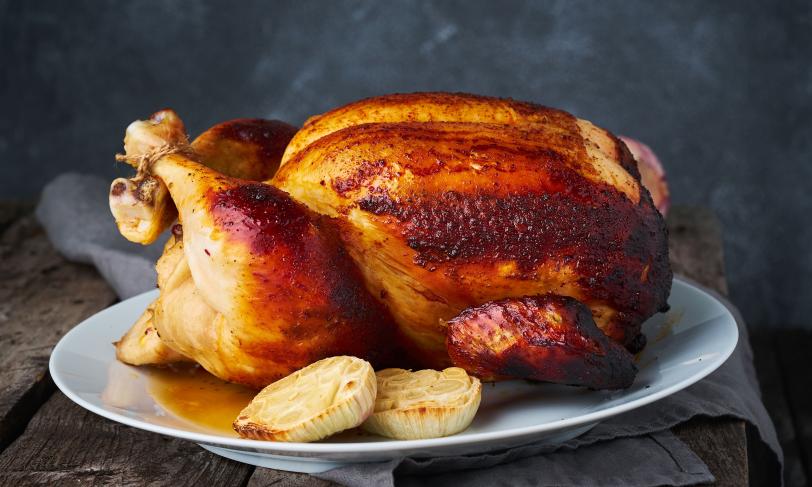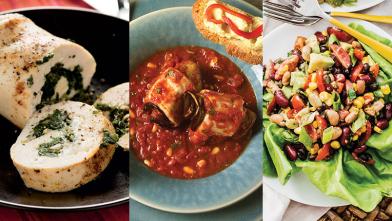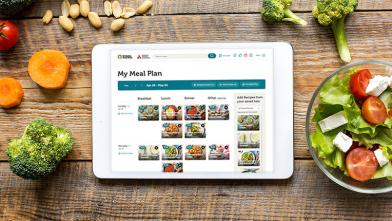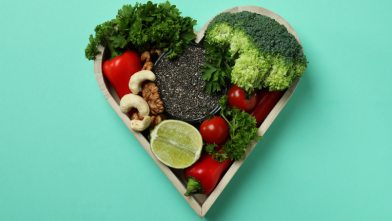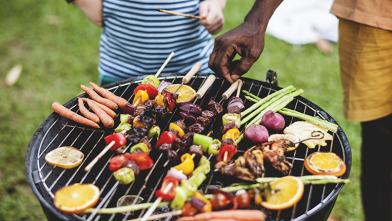Knowing how to roast a whole chicken is a great skill to learn! Whole chicken is a budget-friendly protein food that can feed a crowd or be used as the protein source for other meals during the week. When you cook a whole chicken, it is recommended to leave the skin on to keep the chicken moist. The downside is that leaving the skin on adds more fat to our meal. Removing the skin after the chicken is cooked will help cut down on the saturated fat. You can lower the saturated fat in your portions even more, by eating the white meat.
Dark meat has more fat, so use the dark meat for recipes that have low-fat ingredients like non-starchy vegetables or whole grains that don’t have added fats.
Here are some ways to balance your meal with a higher fat protein like the dark meat of chicken:
- Add dark and white meat chicken as the source of protein in a broth-based soup with carrots, celery, onion, and whole grain pasta.
- Top a leafy green salad with non-starchy veggies, dark meat chicken.
Try this recipe: Grilled Jalapeno Peach Chicken Thighs with Creamy Avocado & Artichoke Salad
- Stir dark and white meat chicken into your favorite veggie stir-fry and serve with brown rice.
Cooking a whole chicken is great for prepping meals for the week but we need to be careful about eating too many foods high in saturated fat like dark meat chicken or chicken skin.
Roast a chicken over the weekend and use it for salads, sandwiches, or other meals. Add more veggies to your dish and a smaller portion of dark meat chicken to help you cut back on the portion of saturated fat. As a bonus. when you are done cooking the whole chicken, you can save the bones and carcass to make your own chicken broth!
Don’t forget to sign up for Diabetes Food Hub’s e-newsletter for monthly diabetes-friendly ideas and recipes
